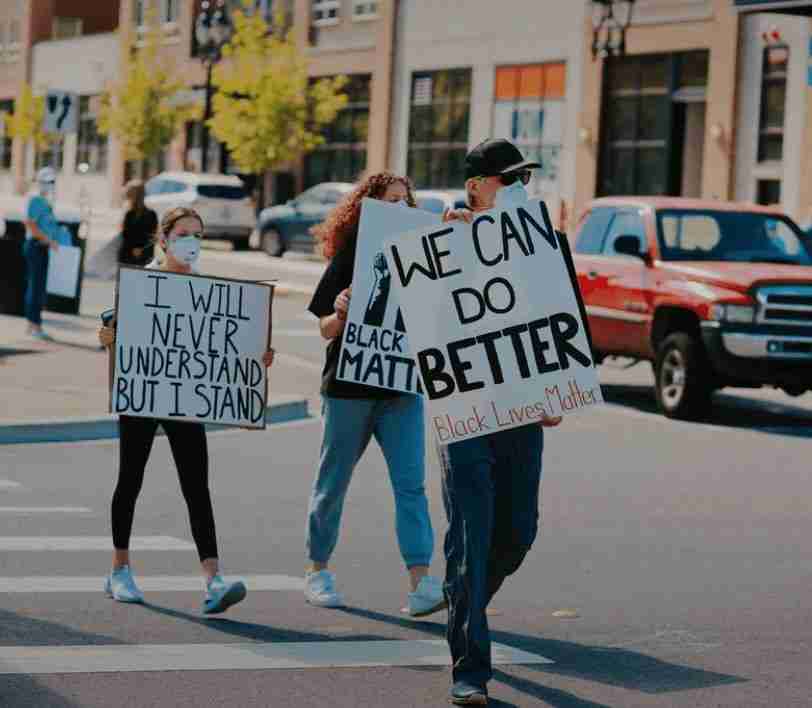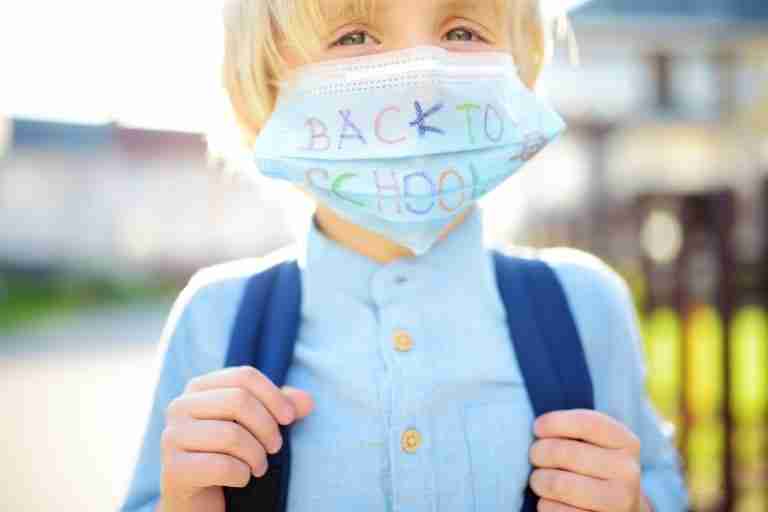10 Ways To Be Proactive and Stand-Up For Social Justice Everyday
Ten Ways To Be Proactive And Stand-Up For Social Justice
There are two pandemics our country is fighting right now. Both are contagious and dangerous. One of the mind and mindset and the other of the body. Both have brought our country to its knees.
Both battles require we work together and personally take steps to help win the war. There are ten simple things we can do personally to fight for racial justice and create positive change for the human race.
It’s not enough to say ” I am not racist”. We must now say “I am anti-raciest”… a proactive way to take action and create change.
A recent article in Vanity Fair, “How White Women Can Be Black Life Matters Allies”, says, “It’s a reminder that, as essential as it is for white Americans to join with the Black community to speak out against systemic racism, there are times when the most constructive thing we can do is simply listen, reflect, and learn.”
That’s what I have been doing the past several weeks—listening, reevaluating, and learning. I have had a fear of writing about this subject because I didn’t want to say the wrong thing, so I am sharing what I have learned about how we can do a better to create positive change.
Looking Inward
It doesn’t start by pointing fingers, it begins by looking inward. It’s critical to understand what white privilege looks like, validate real-life experiences by those who have experienced racism, and dig in to learn as much as possible. It’s not easy or comfortable, but it’s what will help create positive change.
So how can we do better? It starts with listening, learning, and becoming comfortable – being uncomfortable in our own skin. There are ten things we can do in our personal life to fight racism.
1. Self Reflection
We all have implicit biases. That’s okay to admit. We won’t be able to change our prejudices until we address that we have them first.
Start with Harvard’s Project Implicit test. It allows you to take a series of tests to see where your unconscious biases lie—looking at race, gender, age, weight, disability, and sexuality. It’s very interesting.
The bottom line is this:, If we are under the impression that we are living in a post-racism society, think again. For example, consider the under representation of people of color in Congress: Thirteen percent of all Americans are African American, but only 43 African Americans hold seats in Congress, just eight percent. Latinos and those of Hispanic heritage make up nearly 20 percent of the U.S. population, but only seven percent of Congress. Only 19 percent of Congress is female when women are more than half the population (50.8 percent).
“ White privilege is the automatic, taken-for-granted advantage bestowed upon white people as a result of living in a society based on the premise of white as the human ideal, and that from its founding established white advantage as a matter of law and today as a matter of policy and practice,”
2. Understanding Privilege
I am white, and I don’t live a very diverse community. Even though we have many multicultural colored friends, I admit I have no clue what it’s like to experience racism.
With that said, I also admit I did not fully comprehend the term “white privilege” and how it relates to racism. A major “A ha” moment! I can do better. We can do better, so I hope you will pledge to do better with me.
So, how do we do better? The first step is to clarify the basics of white privilege, what it is, and how it works. To learn more and then find ways we can work against racism.
What Is White Privilege?
Out of the gates, if you start with less, you begin life lagging behind others because you don’t have the same opportunities as privileged ones.
We all need to recognize and understand that whites and blacks may both have it hard, but whites have never had it hard based on skin color the way that blacks have. There is a difference.
If you are sitting there thinking you are feeling guilty that you did not grasp this whole “white privilege thing,” please don’t!! It’s not your fault you were born with white skin and your ancestors treated black people unjustly. Just accept it and move on, knowing you want to do better.
My Personal Experience Growing Up
The reality that a white person’s whiteness comes—with an array of benefits and advantages not shared by many people of color. Being a white girl, I grew up attending affluent schools. As I entered high school, it became clear that the student body was primarily white.
I grew up believing that all people are created equal, no matter their skin color. It bothered me that my high school didn’t look more like the other high school’s south of the city. I remember questioning if we are all created equal, then why was there so much segregation? Why was it that my high school was known for being one of the best schools, and why was it so white?
Did you know that if you are black and poor, you are nearly 19 times more likely to live in concentrated poverty than poor white Americans? Therefore, less likely to receive close the education that I received. That’s white privilege.
I must admit I used to think that “white privilege” was described as white people who don’t have to work hard for their accomplishments. Now I better understand how Cory Collins described it be that white privilege is not the assumption that everything a white person has accomplished is unearned; most white people who have reached a high level of success worked extremely hard to get there. Instead, white privilege should be viewed as a built-in advantage, separate from one’s level of income or effort.
It’s Impossible To Fully Understand White Privilege Unless You Are Black
I have come to realize that it is impossible to fully understand the term “white privilege” unless you are black. Why? Because if you are white, you may not recognize what it’s like to walk into a store looking for hair care products for black hair and only see products for white people. Most black women have to drive a long way to find products specifically for their hair type. That’s white privilege.
For instance, when I shop for band-aids for my kids, I assume that their skin color will match the skin colored band-aid. It isn’t the case for my Asian, Black, Indian or Hispanic friends. It’s white privilege. Make sense?
Or, you you ever considered how difficult and damaging it must be for African Americans to grow up studying world history but never having the opportunity to learn about Africa and ethnic studies and not having many role models on mainstream media that look like you? That is white privilege.
In an ideal world, we would be treated equally. Just because many people, including myself, see all races as similar, some don’t. When Martin Luther King said, “I have a dream that my four little children will one day live in a nation where they will not be judged by the color of their skin but by the content of their character”. King never intended for people to ignore the reality of history and racial inequalities.
I realize now that in the midst of being my positive self, I missed the reality. I mean its easy to go about your life and not put your glasses on to see that life as a white person is a privilege in America and always has been.
3. Validate Real-life Experiences Felt By People Of Color
Listen, open your eyes, and validate. We don’t want to burden our friends to educate us on their personal experiences, but if they want to talk, there is so much we can learn from what they have to share.
It’s not easy to have a conversation about racial justice when a tragic media story comes up like this month. It’s why talking more openly about racial injustice with family and friends is so important.
For instance, a friend recently shared several stories about the resentment some people have towards Asians due to the Coronavirus. A caregiver blatantly told an elder Chinese woman that “she (being Chinese) was the cause of the virus.” Another incident was a man in a car rolled down a window to shout, “go back to your country” to a Chinese family. This makes my skin crawl.
My friend was also quick to point out that as bad as these stories are, the black community has had it much worse.
Reach out to people of color, Listen to them, validate their feelings and find ways to support them.
If you are on facebook, please take time to read this post written by Alischia Besteman, who shares a personal story about growing up black.
4. Read- Watch- Listen
To help fix a problem, we must understand all elements of the problem. I have been reading books, watching videos and listening to podcasts to help me understand all aspects of white privilege and racism.
I highly recommend a You Tube video series is called “Uncomfortable Conversations with a Black Man” by former UT football player and sports analyst Emmanuel Acho. Acho clears up so many questions we all want to ask but have never had the opportunity to ask. Please watch these three videos.
In episode #1 Emmanuel Acho sits down to have an “uncomfortable conversation” with white America, in order to educate and inform on racism, system racism, social injustice, rioting & the hurt African Americans are feeling today.
Episdoe #2 Matthew McConaughey sits down with Emmanuel Acho to have an uncomfortable conversation with a black man. McConaughey brings up the fact that many of us have “white allergies”.
Episode #3 Chip & Joanna Gaines sit down with Emmanuel Acho to have an uncomfortable conversation about teaching their kids to “see color” and Emmanuel Acho is asked “if he’s afraid of white people.”
The best books for children to learn about racism are listed here.
5. In-Depth Conversations With Family and Friends
It’s not easy to have a conversation about race or racial justice when a tragic media story comes up like this month. It’s why talking more openly about racial injustice with family and friends is so important.
Share with others what you have learned and what to say and not say. For instance, how to avoid certain racist expressions or ideas. But also admit that you don’t have all the answers.
Learn how to have in-depth conversations with your children about racism in America here. Books for children about how to embrace racism at all ages are found here.
6. Speak Up
When you see someone being raciest speak up and say something. This works well if a white person intervenes when another white person is being raciest.
Also, don’t expect black people to fill you with gratitude for doing so, It is your obligation to support another human being.

7. Educate Children For Generations To Come
If you are a teacher, caregiver or a parent you have the power to educate the younger generations about American history and racism including the indigenous people who lived in our country before it was ever “discovered” and Japanese Americans during WWII.
Don’t be afraid to talk about skin color, don’t assume having colorblind kids is the best thing. It’s important to have everyday conversations with kids about race if we want systemic racism to end. There are seven ways to help children embrace racial differences.
By not talking about race causes children to come to a lot of harmful conclusions on their own.
8. Get Involved
Depending on your connections or career, do you part to fight structural racism. Help open the door to communities of color from access to opportunity and upward mobility by making it more easier for people of color to secure quality education, jobs, housing, healthcare, and equal treatment in the criminal justice system.
Also, you may consider volunteering at human rights institutions. Offer your skills, whatever they may be, to a local organization. If your abilities can be taught to other people, put on workshops so that others can learn from you easily and affordably. Help out in any way you can.
9. Donate Money
Many organizations dedicated to helping save and advocate for Black lives are in desperate need of additional funds, as are the families involved.
You can also donate directly to families of people killed by police. The families of George Floyd, Tony McDade, Ahmaud Arbery, Breonna Taylor, and countless other people who have been murdered by police need financial support to pay for legal and other bills.
10. Support Black Owned Business
Seek out black businesses to support. Here is a list to get your started.
Ron Robinson worked as a cosmetic chemist for big beauty brands like Lancôme, Clinique, and Estée Lauder for decades before launching BeautyStat.
In 2011, Dana Jackson was diagnosed with lupus and completely changed her life. Because of certain symptoms of the disease, she had to take an all-natural approach to beauty and wellness. Her products have completely natural ingredients and they can be found at Credo Beauty, as well as on her own site.
Brought to our attention by Byrdie writer (and Strategist contributor) Sydney Gore, BLK + GRN is a beauty and wellness marketplace full of all-natural products — all of which are made by Black artisans.
Highbrow Hippie was started by beauty industry veterans Myka Harris and Kadi Lee. They stock their shops — online and in Venice, California — with thoughtfully sourced wellness and beauty products.
Bea Dixon started making feminine-care products in her kitchen, and today they are sold at large retailers like Target, Urban Outfitters, and Walgreens. They are 100 percent natural but still clinically tested and gynecologist approved. .
Nancy Twine, who grew up making homemade hair products with her grandmother, is the founder of Briogeo, a clean, natural hair-care line that caters to all textures. Rio Viera-Newton is a fan of their Don’t Despair Repair Mask because it has “the ability to moisturize my sad hair without creating any heaviness,” and finds it to be a good dupe for the Christophe Robin masks. —Jenna Milliner-Waddell
Trinity Mouzon Wofford launched Golde with the intention of making the wellness space more accessible and is known for her chlorophyll face masks and turmeric latte blends. —D.P.
Hanahana Beauty, founded by Abena Boamah-Acheampong, is a clean beauty brand that sustainably sources its shea butter and pays double the fair-trade price to their suppliers.
Desiree Verdejo created Hyper Skin after a bout of hormonal pregnancy acne left her with stubborn hyperpigmentation. Their first product, Hyper Clear, is an affordable vitamin C serum formulated with 15 percent skin-brightening ascorbic acid, as well as kojic acid and vitamin E. —D.P.
Lauren Napier, former celebrity makeup artist, created a line of face wipesthat don’t strip the skin and instead hydrate it as it takes off makeup. She created a different texture for the wipes, and they’re individually packaged, so they don’t dry out. They’re the ones I always buy for myself. —C.A.
A body-care company, founded by Karen Young, that makes the nicest reusable, direct-to-consumer razors I’ve ever seen. They also sell a body gloss, a gel-to-milk in-shower moisturizer, and bikini line masks. —D.P.
Pat makes some of the most luxurious makeup products, and with her long-list of celebrity supporters, she’s one of the most loved makeup artists. —C.A.
Los Angeles–based designer Cameron Tea uses wood beads to make bucket hats, rectangular mini-purses, and bags that are shaped like hearts.
A swimsuit line founded by former model Chantel Davis, Castamira’s bathing suits are designed to support women with curves and come in sleek one-shouldered cuts, as well as ruched designs with lace-up details.
Los Angeles–based CBAAF’s clothes are hand-dyed and made of 100 percent recycled cotton. Their current collection includes oatmeal and Black tie-dyed T-shirt, long-sleeve, and shorts sets.
Mother-daughter duo Rebecca Henry and Akua Shabaka started House of Aama in 2015. According to their website, the brand — which sells silk halter tops, corduroy jackets, and off-the-shoulder tops — “explores the folkways of the Black experience by designing timeless garments with nostalgic references informed by historical research, archival analysis, and storytelling.”
Founded by fashion and travel blogger Fisayo Longe, KAI offers glamorous ruched burnt orange and purple skirts and patterned mesh going-out turtlenecks.
Kenneth Ize works with a small group of weavers and Nigerian artist and design groups to create their pieces. According to the brand’s site, their focus is on “reinterpreting examples of Nigerian craft to create an original perspective on luxury production within textile and fashion.”
Label by Three’s clothes are designed and handmade in Phoenix, Arizona. The brand’s focus is on sustainability, and their designs are made in limited runs from deadstock fabrics sourced from independent sellers in the United States.
Designer LaQuan Smith started his namesake brand when he was 21, and on his site describes the aesthetic as “unapologetically glamorous.” Rihanna, Beyoncé, and Lady Gaga have all worn his designs.
Womenswear brand Maki Oh was founded in 2010 by Maki Osakwe, who, according to the site, “fuses traditional African techniques with detailed contemporary construction.” The line has been worn by Michelle Obama, Solange Knowles, and Lupita N’yongo.
Octave is a Brooklyn-based jewelry line of geometric pieces with hand cut raw stones, including opal and mother of pearl.







